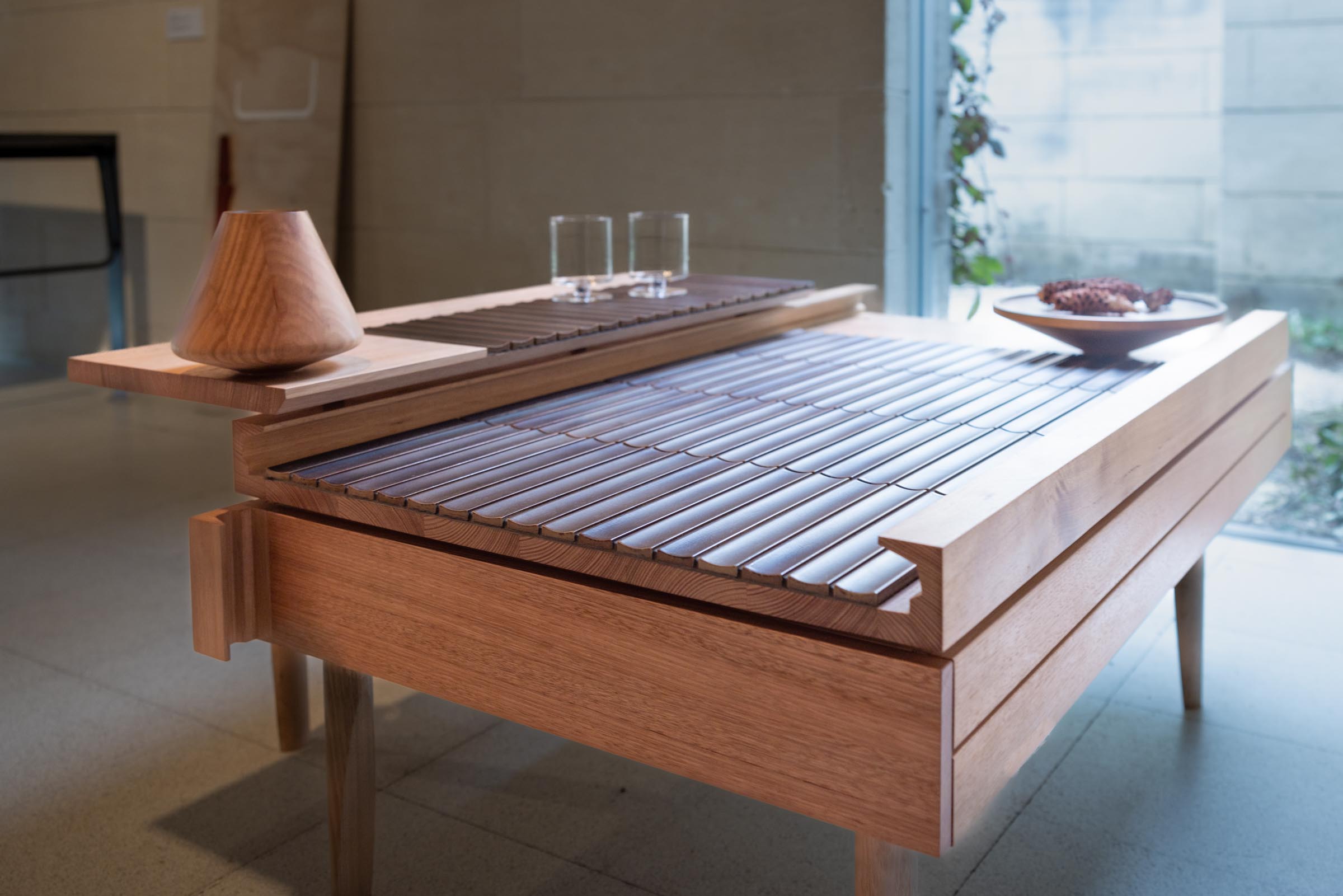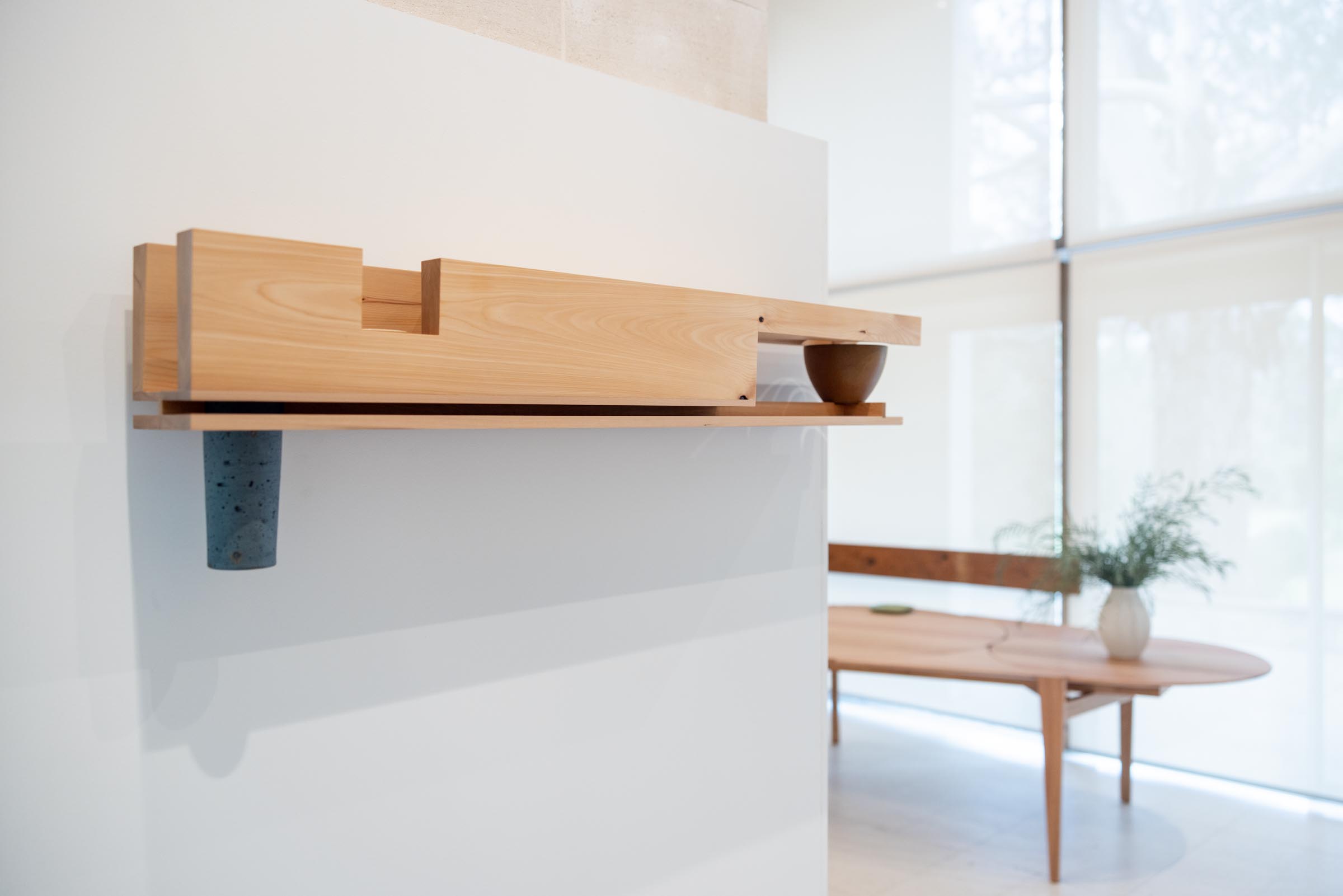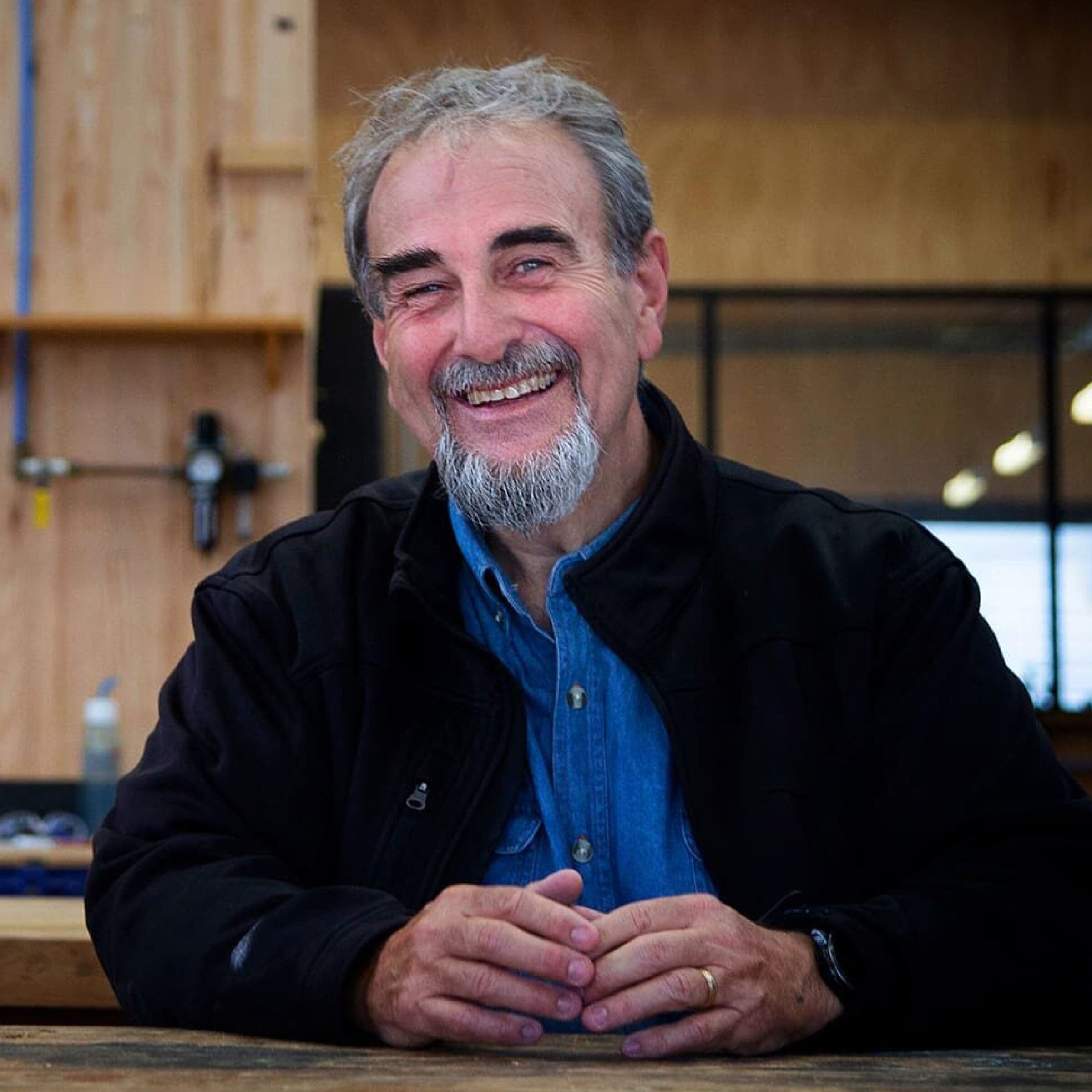Impeccably designed and crafted, ‘Relatively Useful’ acknowledges Australia’s design greats
What do you get when you combine two of Australia’s great design minds with over twenty-five of Victoria and Tasmania’s top makers? Relatively Useful. A collection of twenty-five objects designed by John Wardle and Simon Lloyd and expertly crafted by some of Australia’s leading craftspeople. Making its debut at Melbourne Design Week at the Heide Museum of Modern Art at the end of March, and now open until the third of April.
Describing Lloyd as an artist, industrial designer, and maker, Wardle says the pair have known each other for over twenty-five years, working together on a series of projects over that time. Having commissioned Lloyd through their clients at John Wardle Architects, Wardle says they couldn’t be more different. And that’s a good thing.
“This has been a coming together of two people who know each other particularly well but are complete opposites in just about every way we apply ourselves creatively. At each stage there is a deep curiosity and now a deep understanding of the way we work and a real appreciation of both approaches to design,” says Wardle.
The collection
Now coming together to make Relatively Useful, the collection features a range of everyday furniture pieces and home objects, impeccably designed and crafted with a twist.
“I was quite amused at the idea of the name of the collection. Relatively Useful means you’re not coming here to see a Bauhaus show. Function is not the primary driver but more of a focus on the theatricality of life. There’re all sorts of elements that do have a practical basis and utility, but they go beyond that to suggest some kind of conversation about the life of people,” says Wardle
Items for every aspect of the home and beyond have been brought to life with breathtaking natural materials including cast bronze, clay, copper sheet, natural fabrics and a variety of Tasmanian Timber species including Tasmanian Oak, Blackwood, Celery Top Pine and Tasmanian Leatherwood, from Tasmanian timber supplier, Hydrowood.
A love for timber
Having already specified Tasmanian timbers on multiple projects in his career, including in Wardle’s own iconic Captain Kelly’s Cottage on Tasmania’s Bruny Island and in one of his latest completed projects, Limestone House in Melbourne, Wardle is no stranger to the beautiful aesthetic of Tasmania’s native species. Seeking to use Hydrowood exclusively for his timber pieces in the Relatively Useful collection, Wardle explains that he is drawn to the story and environmental credentials of the submerged timber.
Thirty years ago, Hydro Tasmania flooded forests on Tasmania’s west coast to create water storage for energy production. In those hydroelectric dams, forests of 200–1000-year-old trees are still standing, submerged beneath the water. Thanks to innovative harvesting and processing methods, this valuable timber is now being reclaimed from the depths by Hydrowood.
In addition to Hydrowood’s environmental credentials and powerful narrative, Wardle also says the timber’s beauty is something that can’t be ignored.
“Each of the timbers have their own characteristics. The Celery Top Pine has the most perfect end grain. You’ll notice in the design of many of my things that I love, that aspect of solid timber. To me, if you’re going to use solid timber, it should look solid. I always find something in an item of furniture that reveals the end grain. Designing to the figure of the material is something that’s really important to me” says Wardle.
Nothing left to waste
With a preference for Celery Top Pine, Tasmanian Oak, Leatherwood and Blackwood in furniture making, the exact species used for each piece came about through organic discussions with the makers. With solid timber being used for much of the collection, the offcuts of the prized species did not go to waste.
“We wanted to effectively utilize this important resource to design smaller and smaller things out of the off cuts. Particularly when using solid timber, there can be a high degree of wastage, so Simon made a series of beautiful children’s objects, and I designed these quite complex salt and pepper grinders.
“You’ll notice the anthropometrics of the shakers where there’s grooves for the fingers of one hand and the thumb of the other and they end up fitting together like two people dancing to create this nice little moment” says Wardle.
Designed and crafted: a collaboration
With Wardle and Lloyd being the masterminds behind Relatively Useful, the pair sought out an extensive team of makers from Melbourne, Regional Victoria and Southern Tasmania to bring the collection to life.
“There’s this sort of family tree community of amazing makers from Melbourne and Hobart. These remarkable people have grabbed those threads of traditional craft, skills and knowledge banks that are often so fragile, and they’ve infused those with new forms of knowledge, systems and technologies to make [the pieces from the collection],” says Wardle.
The exhibition is on now until the 3rd of April at Heide Museum of Modern Art at Bulleen in Victoria. Admirers of the collection have the opportunity to bring a piece from this highly collaborative collection home with them, with selected pieces for sale to the public.
Video & Images: Simon Brooke (tigermedia.io)
Product Details
Related Content
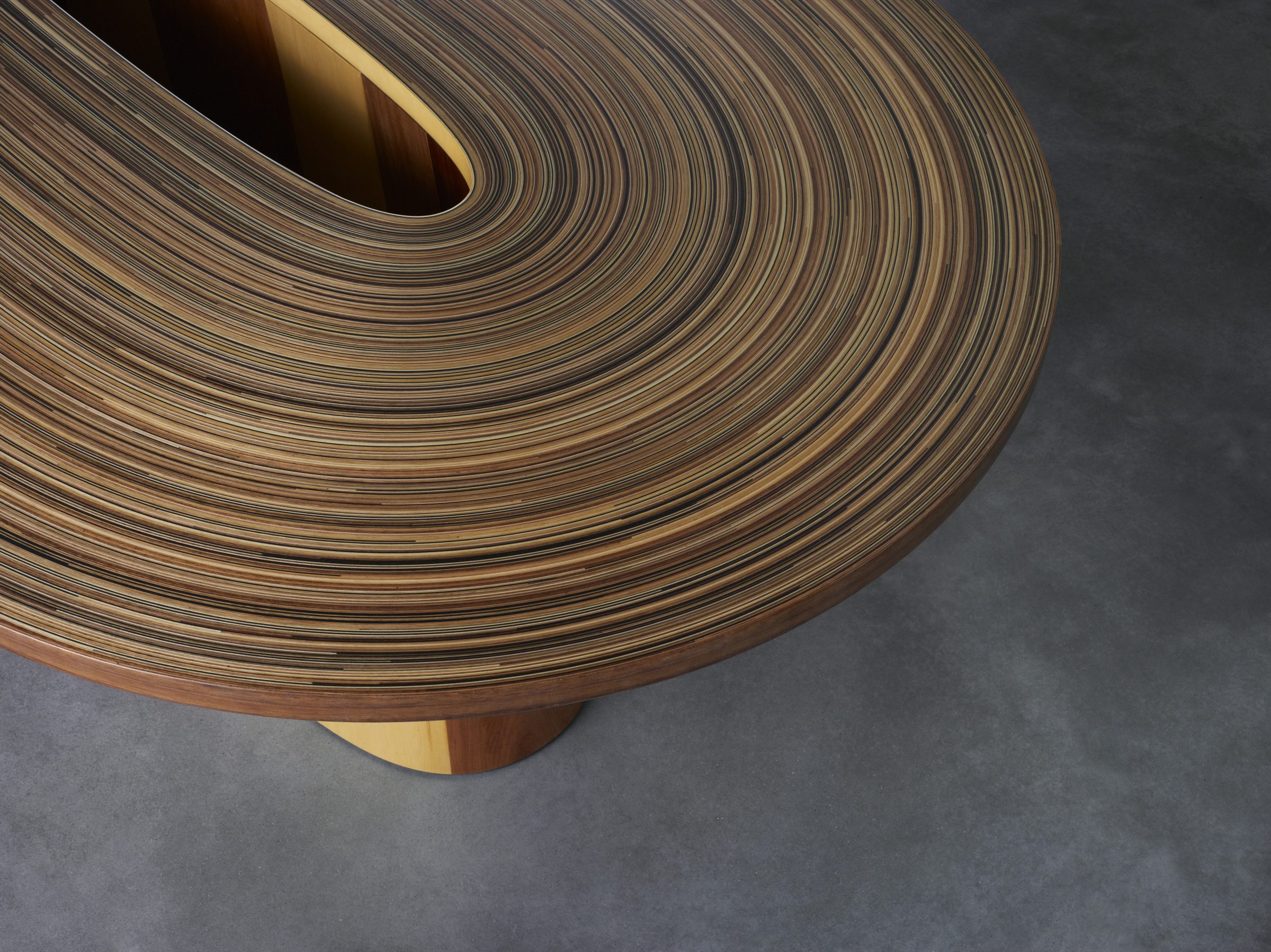
Australian furniture designer-maker brings over three kilometers of Tasmanian timber to the global design table
The last two years have looked quite different for everyone, but the inability to travel has been consistent. For Tasmanian born Brodie Neill, who now lives and practices in London, he couldn’t travel to his…
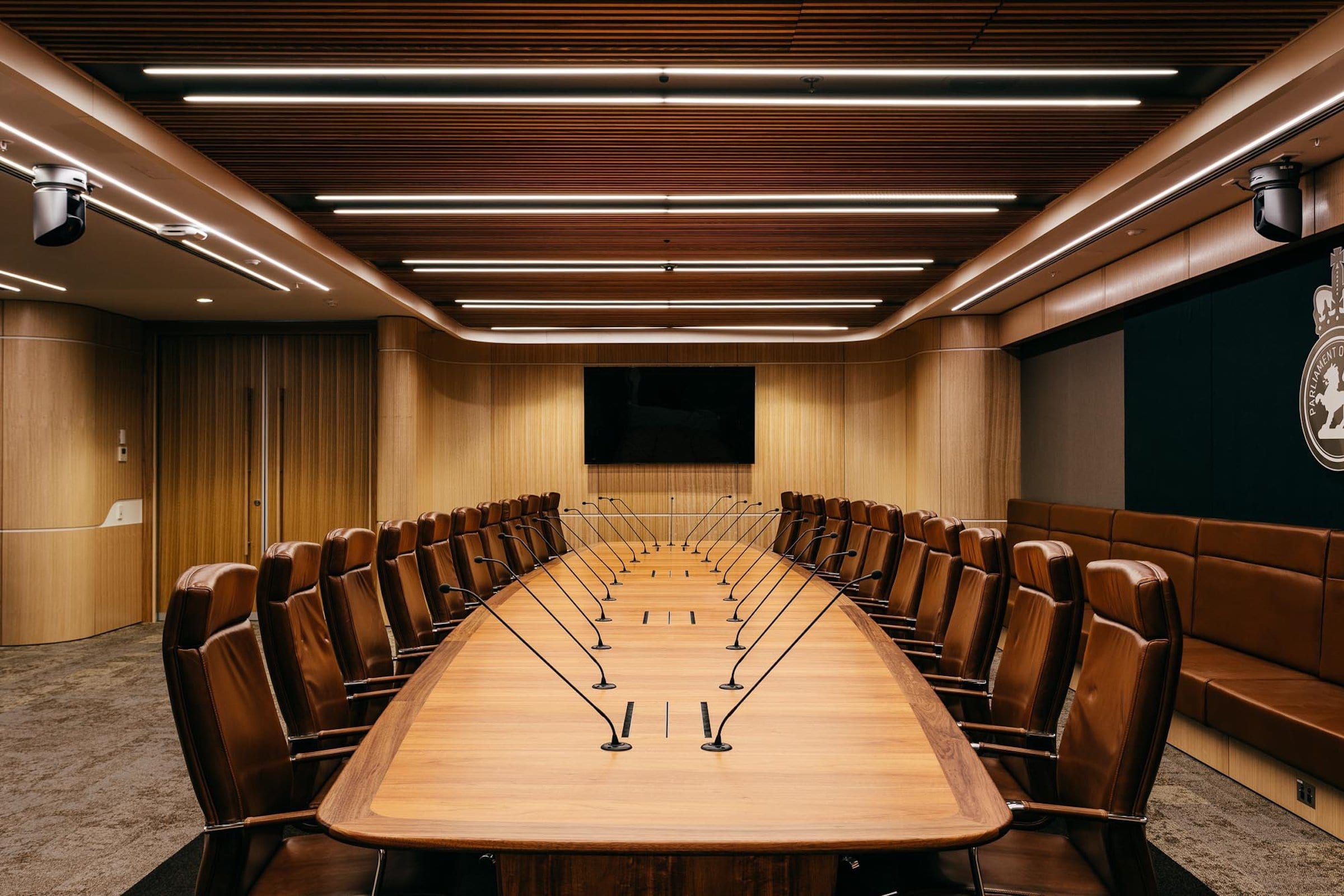
Salamanca Building: a contemporary workplace that reflects the strong identity of Tasmania
With a 5 Green Star rating, Tasmania's new Salamanca Building serves as a benchmark for green-building while showcasing the natural beauty of Tasmanian timbers, and the talent of Tasmanian designer/makers.



Latest Podcast
Michael Lee ·What's Possible with Australian Resources
What's Possible with Australian Resources
Michael Lee is a technical expert in Tasmanian Timber. Mick, as he's known within the sector, has over 30 years experience in research, timber production, and systems. He works with builders, designers, and architects to create solutions that benefit the environment, the economy, and the community.
19 mins
Be The First To Know
Get the latest inspirational Tasmanian Timber projects and stories delivered straight to your inbox!



